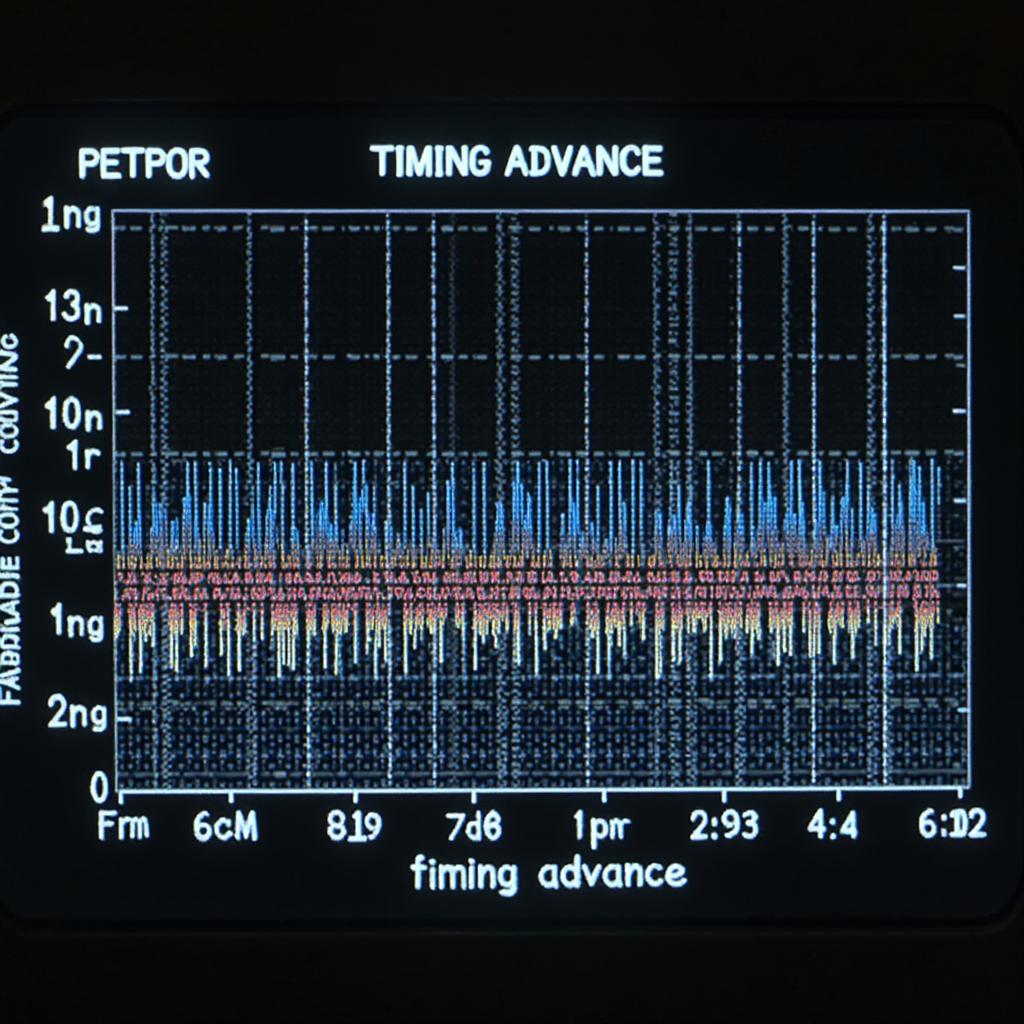Timing advance is a crucial parameter for engine performance, and accessing this data through your OBD2 scanner can provide valuable insights into your vehicle’s health. This article delves into the intricacies of timing advance OBD2 data, explaining what it is, why it matters, and how to interpret it. After reading this, you’ll understand how to use this information for preventative maintenance and improved performance.
Accessing timing advance through an obd2 for bmw can help identify potential issues. Timing advance is adjusted by the engine control unit (ECU) to optimize combustion efficiency based on factors like engine load, RPM, and coolant temperature. Understanding this data can be the key to unlocking your car’s true potential.
What is Timing Advance?
Timing advance refers to the precise moment the spark plug ignites the air-fuel mixture in your engine’s cylinders. This timing is critical for optimal power, fuel efficiency, and minimizing harmful emissions. The ECU constantly adjusts the timing advance to ensure the mixture ignites at the perfect moment. Too early, and you risk engine knock; too late, and you lose power and fuel economy.
Why is Timing Advance Important?
Incorrect timing advance can lead to a range of problems, from reduced fuel economy and performance to serious engine damage. By monitoring timing advance through your OBD2 scanner, you can identify potential problems early on and take corrective action. This can help avoid costly repairs down the road.
How to Interpret Timing Advance OBD2 Data
Interpreting timing advance data requires understanding the units of measurement, typically degrees before top dead center (BTDC). The specific values will vary depending on the vehicle and operating conditions. However, consistent deviations from the expected range could indicate a problem. You can use a peugeot 208 obd2 scanner to monitor these values.
Common Problems Related to Timing Advance
Several factors can affect timing advance, including faulty sensors, vacuum leaks, and mechanical issues within the engine. Recognizing these potential causes is crucial for effective troubleshooting. For example, a faulty knock sensor can cause the ECU to retard the timing excessively, resulting in power loss.
Using Timing Advance Data for Diagnostics
Timing advance data can be a valuable diagnostic tool when combined with other OBD2 parameters. By looking at the relationship between timing advance, engine load, RPM, and other sensor readings, you can pinpoint the root cause of performance issues. An r34 obd2 scanner can be very useful for this purpose.
How Does Engine Load Affect Timing Advance?
Under higher engine loads, the timing advance is typically increased to maximize power output. Conversely, at lower loads, the timing is retarded to improve fuel efficiency. Understanding this relationship can help you interpret the data accurately.
“Timing advance is like the conductor of an orchestra, ensuring all the instruments play in harmony,” says renowned automotive engineer, Dr. Emily Carter. “Monitoring this parameter is crucial for maintaining engine health and performance.”
Optimizing Engine Performance with Timing Advance Data
While adjusting timing advance directly is usually done through specialized tuning tools like an obd2 ecu tuner, understanding the data from your OBD2 scanner can help you identify areas for improvement. For example, if you consistently see retarded timing under high load, it could indicate a problem that needs addressing. A tool like a kess obd2 can be helpful for more advanced tuning.
“Understanding timing advance is like having a secret weapon in your automotive arsenal,” says master mechanic, Robert Johnson. “It empowers you to take control of your vehicle’s performance and longevity.”
In conclusion, timing advance OBD2 data offers invaluable insights into your engine’s performance and health. By understanding this data, you can diagnose potential problems, optimize performance, and ensure your vehicle runs smoothly for years to come.
FAQ
- What units is timing advance measured in? Degrees Before Top Dead Center (BTDC)
- Can I adjust timing advance with an OBD2 scanner? No, usually specialized tuning tools are required.
- What causes retarded timing advance? Several factors, including faulty sensors, vacuum leaks, and mechanical issues.
- Why is timing advance important for fuel efficiency? Correct timing maximizes combustion efficiency, leading to better fuel economy.
- How does timing advance relate to engine knock? Too much advance can cause pre-ignition, leading to engine knock.
- Can I use timing advance data to predict engine problems? Yes, deviations from expected values can indicate potential issues.
- What other OBD2 parameters are related to timing advance? Engine load, RPM, and coolant temperature, among others.
If you need assistance, please contact us via WhatsApp: +1(641)206-8880, Email: [email protected] or visit us at 789 Elm Street, San Francisco, CA 94102, USA. We have a 24/7 customer support team.

